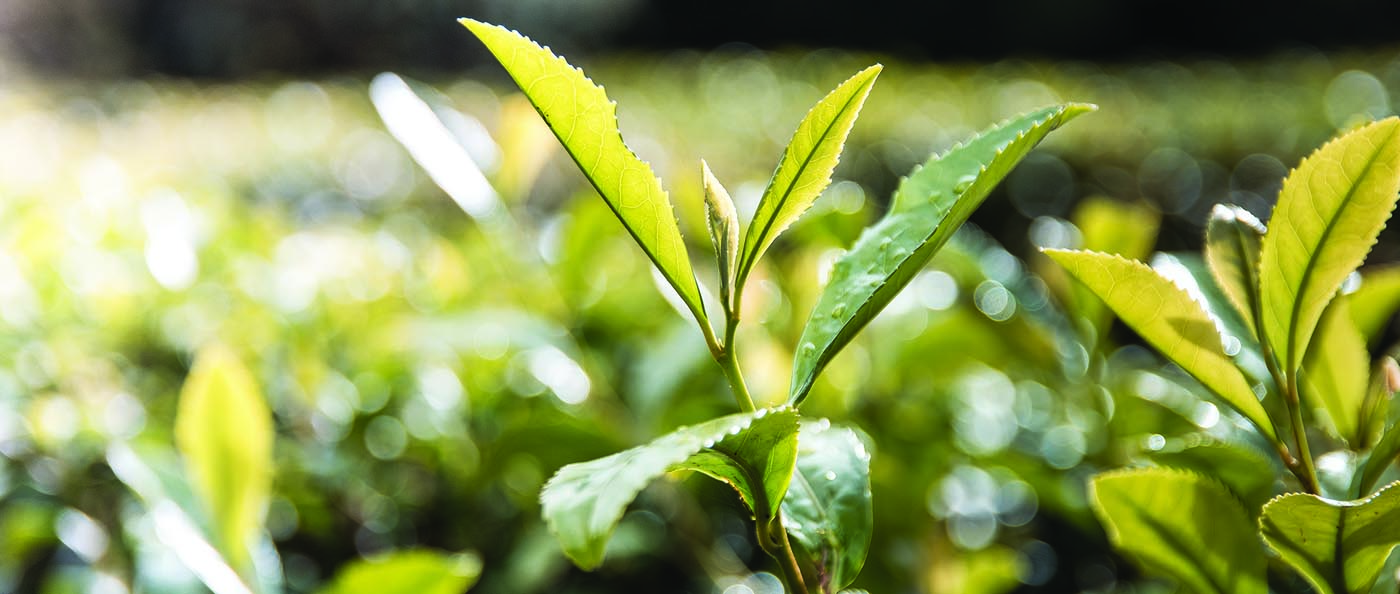It was reportedly considered by Winston Churchill during WWII when imports were threatened, but when it was discovered that the camellias required a 6 year establishment period the plan was scrapped in favour of stockpiling dried tea. Tregothnan knew from the outset that the first English tea would be very special and sought after.
Our tea is incredibly fresh, often reaching you within weeks of plucking. Whilst each tea sachet is individually foil wrapped we recommend storing loose tea in a caddy to preserve flavour and freshness.
Tregothnan usually picks from April to October. A bush is plucked for its top ‘two leaves and a bud’ at least once a month during the season. These tips are the ultimate flavour and softness to create perfect tea. They grow at the end of each branch and are strictly limited in quantity.
The delicate nature of tea means that each plucking can vary in taste. To ensure that every cup is as delicious as the last we blend our tea to maintain consistency and our own unique character.
Yes, all other ‘teas’ are tisanes or herbal infusions.
Black ‘Classic’ tea has five main stages of processing: Pluck, wither, roll, oxidize, dry. The oxidation stage is missed out in the green tea production. The leaves could potentially come from the same bush.
Tregothnan supplied the first tea bushes to keen gardeners in Scotland in 2002 and has enabled dozens of plantings from the far north of Scotland to the islands. The climate is quite different to Tregothnan and special measures are needed to get tea to stay alive in challenging conditions. Our hardiest selections have been planted in dozens of sites across Scotland with limited success. We strongly advise testing a few bushes in any new location before investing in dozens or hundreds of plants. A number of growers are finding seedling tea is hardier and better suited to harsh conditions.
Tregothnan has advised a number of potential sites, from Aberdeenshire to Pembrokeshire and in Europe from Ireland to Portugal. In every case it is sensible to start with a small number of bushes as no other site has the benefit of two centuries of Camellia growing that has been so essential to Tregothnan. Whether Yorkshire, Lancashire or Pembrokeshire tea can join Tregothnan in actually growing within the UK should be known in the next decade.
Tea cuttings are taken from specially selected plants that give the best flavour and the resulting plants are identical to the selected parents, also know as vegetative propagation. Seedlings give variable results and are not favoured by the leading tea gardens of the world. However, if you wish to grow tea in cold or challenging conditions then seedlings can give a serviceable tea bush. The flavours of seedling tea are variable and will lack the consistency of tea from cuttings but can prove hardier. The inimitable conditions at Tregothnan include centuries of Camellia expertise and selections for taste, hardiness and good Camellia breeding as well as the soil and microclimate. We will select the form of tea bush that we believe has the best chance of thriving in your location.
There are many reasons why leaves can become brown on tea bushes and typically include physical or cold damage. Scorching from sunlight being magnified on droplets of water is also common. No ‘evergreen’ plant will keep its leaves forever and the old ‘maintenance’ leaves on tea bushes do eventually fall off. Leaves are more likely to fall off in winter months especially when the plants are young.
If you have a query or concern regarding your tea bush or wish to share with us how well it is growing then please email us a picture here.
These symptoms suggest a lack of nutrients – particularly nitrogen. A potential treatment will be spring applied nitrogen rich fertiliser either as a granula or soluable format to the compost.
Ensure the compost does not completely dry out but it not water logged.
When they are more established tea bushes typically flower in the autumn. New leaves will shoot from late spring to early autumn.
